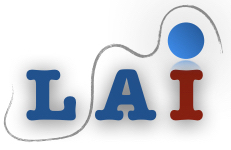Controlling the self-assembly of particles on surfaces is essential to design new patterned and functional materials. Standard methods are often based on bottom-up approaches like the “coffee ring effect” resulting from the solvent evaporation of a sessile droplet deposited on a substrate. However, such methods are limited to a few patterning geometries, lines or rings typically. The goal of our study is to get rid of these limitations by proposing a new versatile and contactless method that allows to assemble and control dynamically the deposition of micro- to nano-sized particles. We use an infrared (λ = 1480nm) laser beam to locally induce thermal gradients inside water droplets deposited on glass slide and make use of Marangoni flows. In addition to the classical coffee ring effect, the Marangoni recirculation transports the suspended particles and concentrate them at the laser spot region. We analyze experimentally the dependence of the spatial extent of the induced flows versus deposit size as a function of the laser parameters and solvent composition. We also investigate the temperature rise profile due to laser heating by Infrared thermography and fluorescence thermometry. To model our results, we quantify analytically the extent of the recirculating flow with respect to the measured temperature profile. Finally, we show that it is possible to shape the final deposit, under optimized conditions, by using masks to shape the laser beam exposure. These first results open a new route towards a better control of deposition patterns.
- Poster

 PDF version
PDF version
